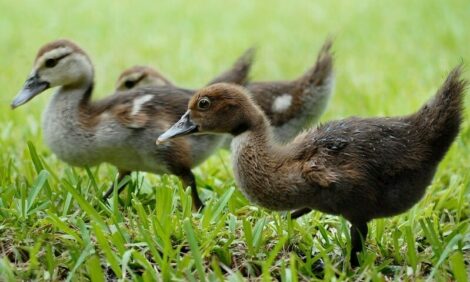



International Egg and Poultry Review: Russia
RUSSIA - This is a weekly report by the USDA's Agricultural Marketing Service (AMS), looking at international developments concerning the poultry industry. This week's review looks at the Russian government's agricultural development forecast.Russia’s Forecast of Socioeconomic Development for 2012 and planning period of 2012-2014 (the Forecast) offers a comprehensive outlook for Russia’s agricultural development in 2012-2014. The Forecast takes into account the goals and priorities of Russia’s social and economic development outlined by President Medvedev in his 2010 state-of-the-nation address and Russia’s Strategy-2020. This forecast is based on the statistics of Russia’s social and economic development through January-July 2011 and development forecasts of Russia’s federal and local government bodies and the Central Bank of Russia. The document outlines different scenarios but recommends the moderately optimistic scenario that GDP should stabilize at the level of 3.3-3.25 in 2011-2014.

The Ministry of Economic Development (MED) estimates that production of livestock and poultry for slaughter (in slaughter weight) should grow by 4.9 per cent year-over-year in 2011, mainly due to production of poultry and pork benefiting from an expected decline in imports and consumption growth.
In the future, given the "saturation" of Russia’s meat market, insufficient infrastructure and existing problems with sales, production growth in key sub-sectors of livestock production will slow down. Production of poultry and pork in 2014 over 2010 should grow by 33 per cent and 21 per cent respectively. For comparison, poultry production increased 1.8 times in 2010 over 2006 and pork -1.4 times.
According to MED, "saturation" of the market with pork and poultry products will signal producers to redirect investment flows into construction of infrastructure facilities, technology improvement, and market research. Over the medium term, MED expects that the share of pork imports in its supply in supply in 2014 will account for 17.3 per cent versus 25 per cent in 2010, for poultry -8.3 per cent versus 18.2 per cent.
Source: USDA Foreign Agricultural Service GAIN Report RS1158

Customs Union 2012 Meat and Poultry TRQs
Russia and Belarus are close allies with several interstate institutions, including the Union State, which provides many trade preferences. The two countries agreed to the 2012 supply and demand forecast of the Union State for some agricultural products, including import quotas for dairy, meat and poultry products, and refined sugar. They have a long-standing history of managing trade of dairy and sugar; 2012 will be the second year of planned exports of meat and poultry products. Belarus’ quota to export meat and poultry products to Russia in 2012 is 270,000 MT, up 29 per cent from the 2011 quota of 210,000 MT. Quotas were higher for beef and delicatessen, unchanged for pork and poultry. Russia’s quota to export meat and meat products to Belarus is 1,200 MT, down from the 2011 quota of 1,500 MT.

On 15 December 2011, the Russia-Belarus-Kazakhstan Customs Union (CU) published Decision 865, establishing meat and poultry TRQ quantities for 2012. Compared to 2011 market access, total volumes are lowered for Russia (pork and poultry), increased for Kazakhstan (pork and beef) and unchanged for Belarus. Russia’s TRQ tariffs, volumes, and definitions will change again to meet its WTO commitments as soon as it becomes a full-fledged member sometime in mid-2012.
A draft Ministry of Economic Development Resolution suggests Russia will break-out poultry into three separate quotas as defined in July 2011. It also suggests country-specific allocations will be issued for chilled beef, frozen beef, and boneless chicken meat.
Belarus’ Deputy Minister of Agriculture stated Belarus will distribute quota among processors (not importers) with no country-specific allocations. Quota holders will decide themselves, based on a tender, where to source product.

Russia, Belarus and Kazakhstan signed a Declaration of Eurasian Economic Integration in November 2011, and a treaty forming the Eurasian Economic Commission in December 2011. The Eurasian Economic Commission will work towards creating the Eurasian Economic Union and a common economic system between the three countries. A Common Economic Space became effective 1 January 2012 and allows free movement of services, labor and capital within the Customs Union. Free movement of goods was already in effect.
Source: USDA Foreign Agricultural Service GAIN Reports RS1158, RS1164, RS1159, RS1081; news wires
Further Reading
| - | You can view the full report by clicking here. |









